Introduction
Radiative electron capture (REC) of a single electron, observed in fast collisions of fully stripped high-Z ions with light target atoms, is a dominant charge-exchange process [1]. Here, the fundamental electron-photon interaction mechanisms can be studied complementary to photoionization experiments when considering REC as time reversal of photoeffect. Recently, considerable efforts, directed onto electron-photon interaction, went towards details of double photoionization of two-electron systems. This phenomenon, in particular, deals with very challenging problems of atomic physics where electron-electron interaction should be taken into account, thus entering the area of correlation effects [2].In order to follow this guide line, the main intention of the present experiment was to observe processes associated with capture of two electrons into bare and fast heavy ions. Measurements of projectile x-rays associated with double charge exchange give an access to investigation of the following radiative processes:double radiative electron capture (DREC)a two-step process in which two uncorrelated electrons are captured in one collision and two photons are emitted, both with the energy of single REC photons; |
radiative double electron capture (RDEC)a one-step process, where the energy and momentum gained by capture of two correlated electrons is converted into one photon with twice the energy of single REC photons. In analogy to REC, the RDEC can be treated as time inversion of double photoionization. |
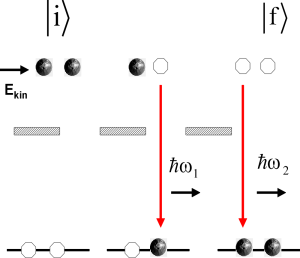 |
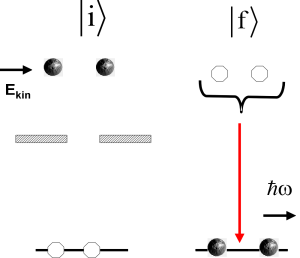 |
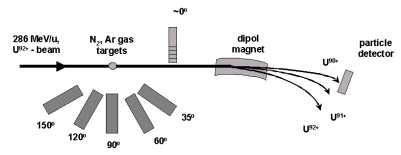
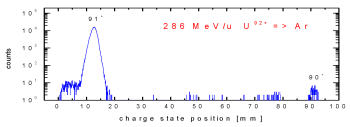
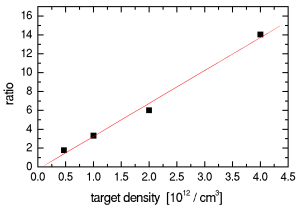
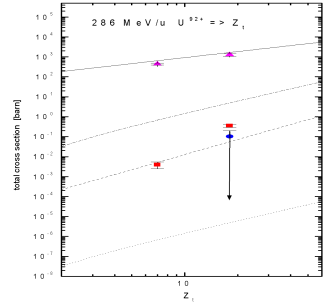
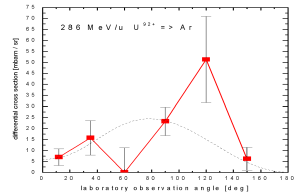 In addition, the angular distribution of K-REC photons associated with double electron capture was registered. The corresponding differential cross sections were determined by normalizing the photon yields to the number of K-REC photons measured in coincidence with single capture, where the angular distribution is known with a high accuracy [7].
It turns out from the data plotted above, that differential cross sections at 60 and 120 deviate from the emission pattern known for K-REC assotiated with single electron capture (dashed line). The observed angular distribution (see solid guide line) can be a signature of quadrupole emission, which suggests an influence of the second electron involved into the capture process.
In addition, the angular distribution of K-REC photons associated with double electron capture was registered. The corresponding differential cross sections were determined by normalizing the photon yields to the number of K-REC photons measured in coincidence with single capture, where the angular distribution is known with a high accuracy [7].
It turns out from the data plotted above, that differential cross sections at 60 and 120 deviate from the emission pattern known for K-REC assotiated with single electron capture (dashed line). The observed angular distribution (see solid guide line) can be a signature of quadrupole emission, which suggests an influence of the second electron involved into the capture process.